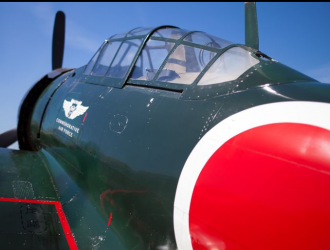
Single-engine Cessnas are still fitted with the tried-and-true suction-type stall-warning horn, which relies on the vacuum created at the leading edge of the left wing to suck air through a reed that generates noise to announce the approach to stall. The new Skyhawk is equipped with Safe Flight’s AOA lift transducer mounted on the right wing leading edge and the AOA indicator (Indexer Computer) mounted on top of the cockpit glareshield on the left side of the compass. The AOA system is calibrated to deliver accurate indications in any configuration and at any speed, including during slips. Whether in an accelerated cross-control stall or a straight-ahead power-off stall with flaps up or down, at any weight, wing loading or cg, the indicator will accurately show the actual AOA.
The new Cessna single-engine airplanes are all equipped with Garmin G1000 flight decks. (The TTx has a G2000 system with touchscreen controls, but no AOA.) Some wonder why Cessna didn’t just employ a Garmin AOA with the display on the G1000 primary flight display (PFD), but this configuration would tend to keep the pilothead-down, looking at the PFD instead of outside the cockpit during landing. The Safe Flight Indexer is easily viewable while looking through the windshield, and its LED display is plenty bright when sunlight is shining on it. Pilots can set a reference marker on the Indexer “for establishing AOA climb, cruise and approach AOA targets,” according to Safe Flight.
The Indexer uses red, yellow and green LED lights to indicate AOA, along with audible Geiger-counter-like clicking sounds that speed up as AOA nears the stall. While the AOA system can help pilots fly more precisely and maintain a safe margin above stall, the system is advisory-only and is not to be used for any performance credit or to replac the stall-warning system, Safe Flight warns.
FLYING WITH THE AOA
After departing Wichita’s Eisenhower Airport in CAVU weather, we climbed to 4,500 feet over Cheney Reservoir, wher I flew some steep turns and stalls. During the steep turns, the AOA climbed into the yellow and began buzzing to indicate the lower margin over stall. In the stalls, the AOA’s top two LEDs turned red and the audible warning buzzed faster, always before the full stall and wing dro occurred, giving the pilot plenty of warning that it’s time to reduce pitch and AOA. During cross-control stalls, the AOA gave plenty of warning before any adverse reaction by the airplane, and it was easy to stop the buzzing and bring the Indexer back into the green by simply reducing pitch.
When properly calibrated during installation, the Indexer can be used to show various phases of flight: long-range cruise, with head- or tailwind or no wind, normal or short-field/obstacle clearance takeoff, maximum endurance and landing approach modes such as fast, on-speed or slow.
I flew two touch-and-goes on Runway 36 at Clyde Cessna Field in Kingman, Kan., one with full flaps and one no-flaps. While I’ve flown airplanes with AOA indicators, most of those that I fly aren’t equipped with AOA systems, so I had to force myself to watch the Indexer during the approaches. I tried the “fast” landing indication of two green LEDs on the Indexer and found that gave me plenty of energy for a smooth flare. With full flaps and using the on-speed indication, airspeed settled at 60 kias, and the Skyhawk felt comfortable in the final-approach zone that I am used to. Watching the Indexer, it was easy to adjust pitch to keep the LEDs in the green and right wher I wanted while still looking through the windshield. It is important to monitor airspeed, of course, with an occasional glance at the PFD, but the AOA system made me feel more confident about maintaining a stabilized approach with plenty of margin over the stall.
We returned to Eisenhower for another full-flap landing, and I kept my eyes on the Indexer while Bleakney monitored the airspeed, and the resulting flare and landing worked out perfectly.
Adding the Safe Flight AOA system to the Skyhawk makes perfect sense, because in my opinion all entry-level training airplanes should be equipped with AOA systems. Simply adding the system to an airplane doesn’t instantly improve safety, but as pilots and especially flight instructors become more familiar with AOA systems and incorporate them into training and operational flying, there will be a significant safety benefit.



